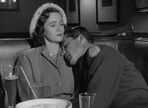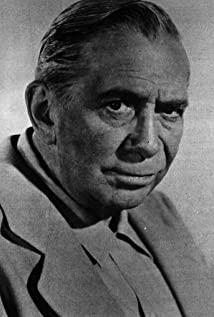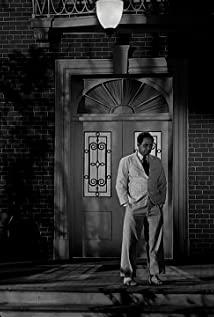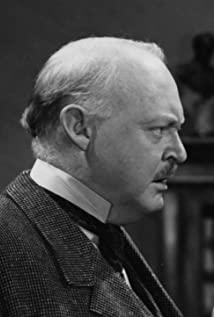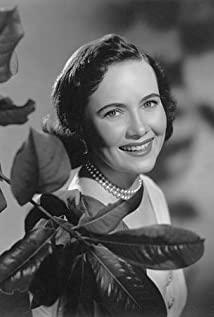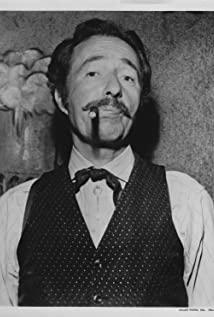After the war, the United States, although not like the war-torn and defeated countries in Europe and Asia, still faces a social issue that is closely watched by the whole country, how to treat and arrange demobilized veterans. In fact, this thorny social problem had already begun to show up a few years before the war was still going on. In 1944, "Time" magazine published a story of a demobilized soldier who had participated in World War II and encountered various setbacks after returning to his hometown. After returning to the United States from the European battlefield, the protagonist of the story is emotionally complicated when returning to work or reuniting with his family. In many respects, he is incompatible with post-war American society and civilian life. As a result, their lives have become difficult and heavy. After reading this story, Gao Dewen, the founder of the Hollywood Raiden Film Company, a well-known industrialist and producer, came up with the idea of shooting a movie with this theme. He approached the novelist Kanter and asked him to write an outline for the film. Kantel was deeply attracted by this subject in the process of writing, and wrote a 268-page novel titled "The Glory Belongs to Me" in one effort. Next, Gao Dewen invited Sherwood, a playwright who has won the Pritzker Prize three times, as the screenwriter of the film. Sherwood has beautiful writing and quick thinking, and once served as the drafter of President Franklin Roosevelt's speech. He grasped the two sensitive topics of "the change of human destiny and the conflict between human and society", and used realistic brushwork to show the emotional ups and downs and life experiences of three demobilized veterans from the same village after the war.
After the script was completed, Gao Dewen found his old partner and the famous film director William Wheeler as the director of the film. Wheeler himself served in the U.S. Air Force for three and a half years and completed the famous Oscar-winning film "House of Valor" during the war. Wheeler has a deep understanding of how demobilized soldiers adapt to civilian life after the war. The main creators quickly reached a consensus: Unlike ordinary Hollywood drama films, this film should express the above themes in the form of a realistic ethical film. It should be a true portrayal of the reality of American society, and should truly reproduce the life events after the war, rather than cover up or even distort these events. This should be their conscience and responsibility as film artists, not in exchange for cheap tears from the audience, nor a means of exchanging high profits. They and all the creative staff used brand-new aesthetics and meticulous hard work to cultivate a beautiful and fragrant flower for American movies.
Compared with the traditional dreamlike Hollywood theatrical movies, this film has distinct characteristics of realism. This feature is embodied in all the elements of the film's narrative structure, characters and environmental modeling, and the creation of audiovisual images. First of all, compared with the luxury scenes in most Hollywood films, the scenes in this film, whether in the military airport terminal, or bars, apartments, and rooms, are strictly designed according to life prototypes, making the audience feel that the characters in the film are just Live in the real life environment they are accustomed to. Secondly, none of the plots in the film add dramatic exaggerations, and the feelings of the characters are like natural expressions of real life, rather than relying on dramatic performances. For example, bank clerk Al returned home from the battlefield and woke up from his dream the next morning. He threw away his stinky shoes and socks first, and then prepared to wash. He picked up his photos of the year and saw his haggard face in the mirror. The image reflected by the mirror not only creates a three-dimensional feeling with depth of field on the plane, attracts the viewer’s visual attention, but also produces a contrast effect. So that the audience can feel the inner activities of the characters.
The realism of this kind of film is inseparable from the successful performance of the actors. In the performance of the whole film, all actors do not use makeup, but rely on their "natural colors". Russell's performance as Homer, a disabled soldier, is the most memorable, memorable and touching. Russell, who personally participated in World War II, carried the detector in both hands during a battle. He lost his hands due to the accidental explosion of the detector. Before participating in the creation of this film, Russell had never acted in a movie, nor had any acting experience, except in a brief military training film showing how he could use hook prosthetic hands to replace his lost hands. However, the trials of war and the test of real life made him devote himself to the creation of this film. Producer Gao Dewen, director Wheeler and all creative staff were moved by his spirit. Director Wheeler also said that he is the best natural actor he has ever encountered. When he first appeared in the film, he curled up in a corner of the crowded waiting room, waiting for a place. When the waiter called his name and asked him to sign the registration form, he stretched out his prosthetic hand from his sleeve. The waiter may be commonplace for this kind of passenger, without any surprise or comfort, but just said that he would sign for him. Homer said that he could spell his name with artificial hands and then signed it skillfully. The clutches of the war made Homer's limbs mutilated, but after he returned to society, he still tried to reshape a complete self. He lost his hands and was naturally depressed and unhappy. The fiancee came to visit Homer, and he performed airgun bullets and shooting for her. When he suspected that four curious children were gathered around the window to look at his "iron paws", he was disturbed, unable to grasp the handle when opening the door, smashed the glass angrily, scared the cowardly little sister and ran away. Fiancee. That night, he quietly came to the little sister's bedroom, gently covered her with a quilt, and then asked his father to help him change clothes and sleep. Dad helped him take away the cigarette butts, Homer faced the wall in thought. In these scenes and the subsequent development and changes of the relationship between the characters, Russell followed the aesthetic guiding ideology of the film creation to portray his role in a true and meticulous manner. He won the Honorary Medal for the inspiration and courage that his successful performance in this film brought to the demobilized soldiers.
The creation of other characters in the film has also been strictly incorporated into the track of the above-mentioned aesthetic principles. In the scene showing the reunion of those veterans with their long-lost relatives, we not only felt their inner joy, but also saw their overjoyed mood through the use of some small gestures. For example, Al and Fred saw Homer in the taxi seeing their parents, younger sister, and fiancée after returning home. When Homer stretched out her prosthetic hand to bid farewell to Al and Fred in the car, the mother saw her son's prosthetic hand for the first time. Homer turned and asked his mother "what's the matter?" Dad immediately said: "She was happy to see you." After that, everyone walked into the house together. Here Homer's mother did not say a word, but showed the heart-piercing pain of a mother losing her hands for her own heart and flesh. In contrast, when Al returned to the door of his apartment, he paused for a while and then rang the doorbell. When the son opened the door to see his father, he was about to call, Al covered his mouth; when the daughter came out, the action was repeated again. The wife was cleaning and tidying up in the kitchen, hearing the noise outside, hesitated for a moment, walked out of the kitchen, and saw the long-awaited husband in front of her. She and Al excitedly embraced each other and kissed each other. In the foreground are their children happily looking at them, and in the background are the couples who have reunited after a long time. When they looked at each other, Millie said the first sentence: "I'm too sloppy!" This method of treatment fits her mood right here and now. For another example, when Millie and Paige drove Fred home, Fred met repeatedly when he got out of the car because he was drunk, and fell in front of the colonnade when he walked to the door of the apartment and just pressed the doorbell. Millie and Paige watched him with concern, suspecting that he had remembered something wrong, they helped him into the car again. Al and Fred, drunk, put their arms around each other in the back seat, like a pair of lovers. In short, the actions and behaviors of the characters in this film are natural products during the development of the plot, without leaving traces of artificial design.
In order to create a realistic screen image that resembles life, the film adopts and explores the aesthetic effects of black and white photography. For this reason, the costume design of all the characters in the film adopts a black and white tone. For example, at the prom we saw Piggy’s black dress and Mary’s white floor gown, as well as men’s dark gowns and white shirt collars. Photographer Toland creatively used the depth-of-field composition method, carefully shooting each shot, so that the lens and the picture not only truly reproduce the original life, but also full of rich audio-visual information and profound meaning, and vividly and cleverly show the protagonist Subtle changes in inner activities and relationships between characters. The most prominent example is in the scene where three veterans meet in a bar. The film uses a realistic and very moving front and rear composition: In the foreground on the right front, Homer, who has lost his hands, uses the "hook hand" and his uncle. With the wonderful performance of the four-handed piano, Homer is in the most prominent position. In Homer's smile, his "hands" that slide on the keyboard no longer make people feel creepy, but make people feel cordial and spontaneously infinite respect. In the back view in the upper left corner, Fred made a call in the phone booth, and according to Al's request, said that he had broken off his relationship with Pie Ji. Paige's father, Al, is standing by the piano, paying attention to the two spaces, the telephone room and the piano. Through his vision, the audience can see the three images in the front and back scenes at the same time, and observe the subtle relationship between them, which is "same disease and sympathy" but also conflicts of interest. In another example, Homer's strong will and noble sentiment finally won Wilmore's love. They held their wedding in a warm atmosphere and began the best golden age of their lives. In this group of before and after compositions, the film integrates the newlyweds, the congratulatory crowd, and the relationship between Fred and Paige. The exquisite composition shows the happy ending of the two lovers who finally become married. In addition, the film also makes extensive use of mobile photography and the repeated alternation of subjective and objective shots to express how the characters feel when facing a new life. For example, when three demobilized veterans travel home in the same taxi, the film uses a set of long moving and dissolving shots, through their subjective viewpoints, to allow the audience to see the peaceful and peaceful civilian life in the United States after the war. scene. Through their joyful faces reflected in the rear-view mirrors inside the car, the audience could see their inner activities again.
In short, the realism expression methods explored in the film "The Best Time in Our Life" and the aesthetic ideas it successfully exerted are not only in the American films of the 1940s, which are dominated by "fantasy and dramatic aesthetics." It has a unique approach, and has an important position in the world film scene where the neo-realistic film aesthetics is being formed. The reason why it won the eight Oscars of the year depends not only on the vivid and touching relationship between the characters and the unforgettable scenes, but also on the answers it provides to solve the problem of demobilized veterans after the war-understanding , And it depends on the "best age" that it created for American movies with its unique aesthetic concept.
View more about The Best Years of Our Lives reviews



